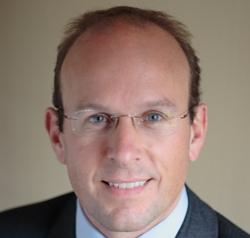James Pike imparts the importance of re-examining your investment strategy and retaining a long-term outlook when managing charitable assets.
Whilst there have been undeniable investment opportunities, the last few years have been a difficult time for any investor. Financial markets have neither been particularly kind nor indeed easy to navigate over this period and the future is likely to be just as opaque.
Resilience has been severely tested from 2007 onwards for trustees, fund managers and individuals who believed in - and thought they had - a long-term investment horizon. Our industry has a natural tendency to extend the duration of ‘long-term’ when financial assets are being battered. One could argue that this is firstly, to allow a reasonable recovery period for higher-quality assets that in the holder’s mind have been unfairly sold down; secondly, perhaps more from a business management point of view, to improve the categorisation of future investors into those who really can weather the kind of financial tsunami from which we are tentatively emerging.
But is any investor really long-term? Who truly has the ability and stomach to ride a down-draft in markets and not be frightened out of real assets often at the worst possible time? The pension fund industry appeared to do this post the 1990s technology bubble and one wonders if the broad investment community absorbed this lesson – money market fund flows in 2007/09 would suggest not. However sophisticated and quantitative the world of investing has become, responding to these questions remains difficult. Perhaps the most interesting aspect of investing is that it all comes back to a more nebulous uncited phenomenon, human nature, which will largely determine an investment outcome.
Across the broad spectrum of investors, permanently endowed funds should, in theory at least, be the bodies most able to weather larger bumps in financial markets. The perpetual nature of many charitable assets naturally positions them in the category of having a long-term investment horizon. It is through these crucial (but short-term in their lifetime) periods of volatility that charity trustees have the difficult yet critical task of retaining their long-term outlook, although it is understandable that trustees often have an overwhelming desire to prevent the chance of a hiccup ‘on my watch’.
Conservatism 'biggest risk to charities'
There will be many charities whose income requirements are largely derived from an endowment, thus increasing the importance of its yield. Others are able to take a more holistic approach, meaning through multiple investment cycles yield does not have to be the dominant input factor when optimising an appropriate investment strategy. In this era of virtually zero per cent base rates combined with capital market volatility it is extremely difficult for the finite tenure of trustees not to cloud the perpetual lifespan and investment objectives of a charity. The intuitive reaction might be to de-risk the portfolio; the result being too conservative a strategy. This conservatism could be the biggest future risk for some charities. Government-funded grant aid has already been halved for many, thereby increasing pressure on investment performance to enable the fulfilment of charitable objectives.
With the spotlight on investment management capability, re-examining strategy and as thorough an understanding as possible of the ‘potential’ future behaviour of a charity’s current asset mix are vital. Those with reasonably certain cash outflows should better be able to model whether the current mix might meet the yield objective, but even those with uncertain or lumpy cash demands can run a scenario incorporating some severe (outflow) assumptions if appropriate. This exercise should also test the strategy under unusually adverse circumstances to enable some idea of a portfolio’s maximum drawdown during these kinds of events.
Unsurprisingly, the crux of this operation are the inputs: return, yield and volatility assumptions, the robust process behind these numbers and the mechanism that crunches them. Another vital element is an understanding that the main ingredients are just assumptions, not point forecasts to be slavishly swallowed and angrily regurgitated when not met, or indeed altered after a month. A common mistake is interpreting the resulting potential return number as ‘given’; significant value also lies in the peripheral work a manager should carry out to give trustees an appreciation of ranges, associated probabilities and the potential downside of any particular strategy. Trustees are often comforted by the fact that it should be possible for them to ignore an investment manager’s view and overlay returns and other associated statistics they are more comfortable with. There are pitfalls with any forward-looking analysis; the best reassurance is by providing trustees with a professional and considered investment philosophy/strategy and by being able to demonstrate this clearly without hiding behind the assumptions that have to be made in order to perform this.
Such an exercise should be undertaken well before considering fee differentials between managers - typically the first place to examine when returns are low. A focus on costs rather than on quality and the above type of analysis is missing the point. The world of managing charitable assets is highly competitive and demanding so no house can afford to be greedy. One would hope any adverse differential is outweighed by decent performance in an upswing, some protection in more turbulent times and a high level of service. Flexibility, the individuals at the investment house involved and their demonstration of genuine tailoring with a true understanding of a charity’s mandate should rank highest on the trustees’ selection criteria.
James Pike is charities specialist and director of J O Hambro Investment Management Ltd









